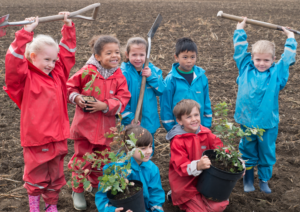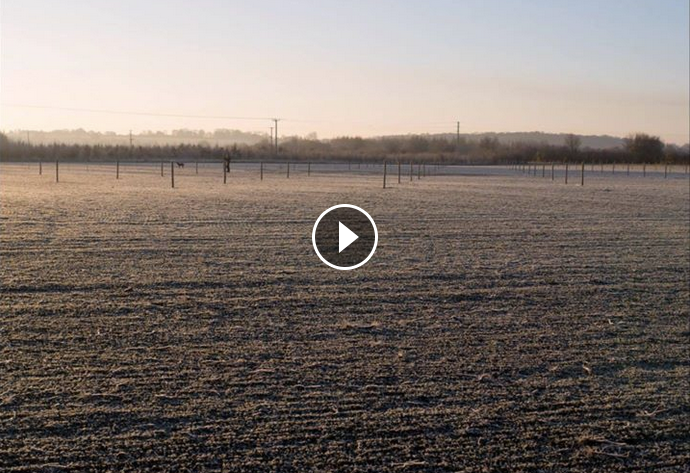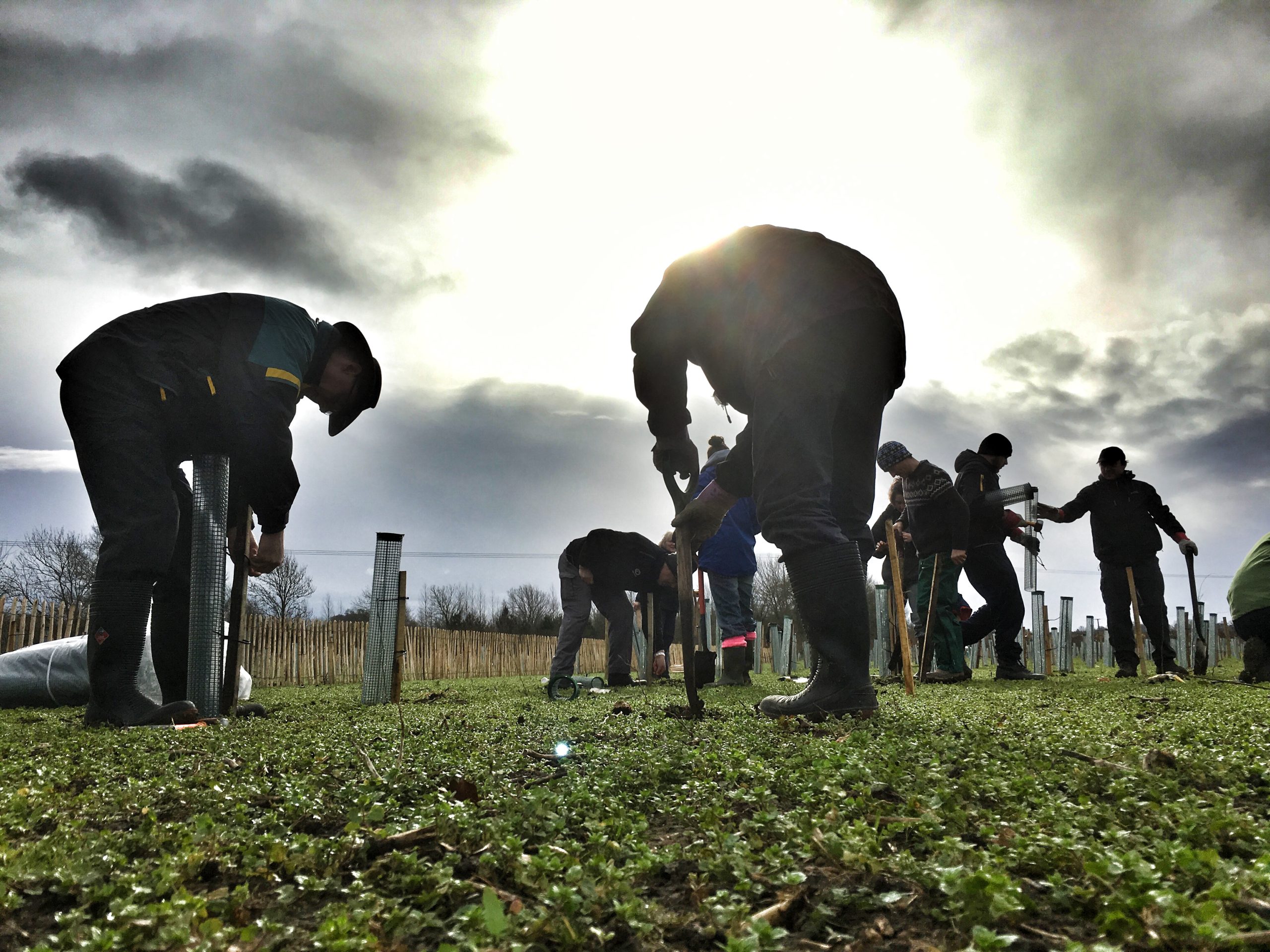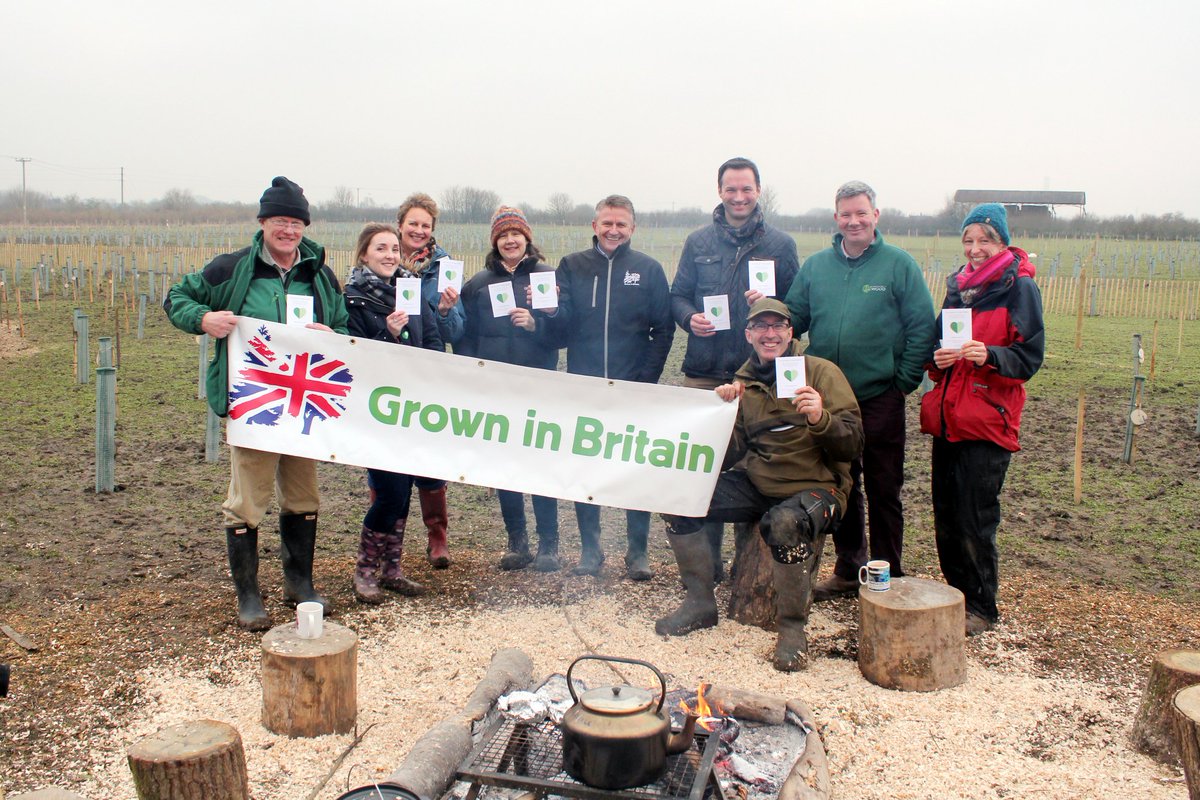Sylva Future Forest
When we plant a tree we hope it will live and be healthy for many years – perhaps even beyond our lifetime. But, with climate change, pests and diseases threatening our woodlands, which tree species are best equipped to thrive and stand the test of time?
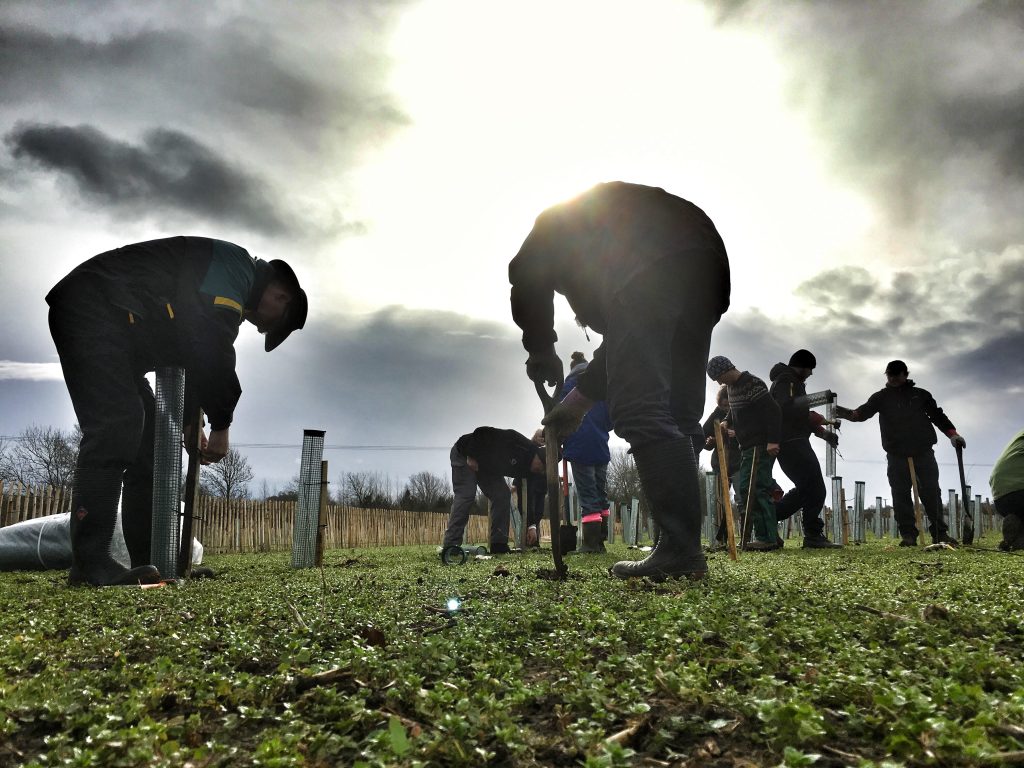
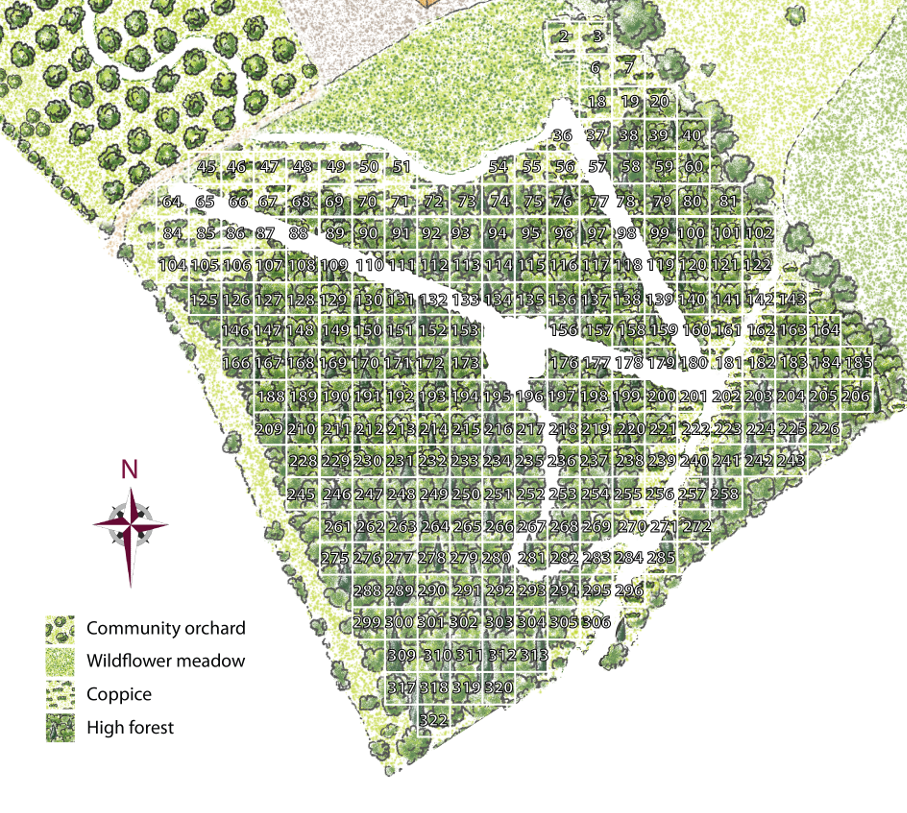
In 2017, our three-hectare woodland at the Sylva Wood Centre, comprising 7,500 trees, was planted with help from volunteers to help find out.
Find all of the plots and out sponsors on the map:
The Future Forest at Sylva is comprised of three categories of trees:
- Natives: old and bold (e.g. birch, oak, field maple, lime) from local sources
- Natives with new genes: from sources matched to our future climate (2-5 degrees South)
- Exotics: “outlandish, rare, and choice” – trees from far away that may do better than the Natives in future (e.g. tulip tree, Japanese red cedar, deodar, paulownia, Italian alder)
There are also coppice areas planted with hazel, sweet chestnut and robinia. These shorter trees will produce wood that can be used within five years for products such as walking sticks, hurdles, pea sticks, fencing stakes.
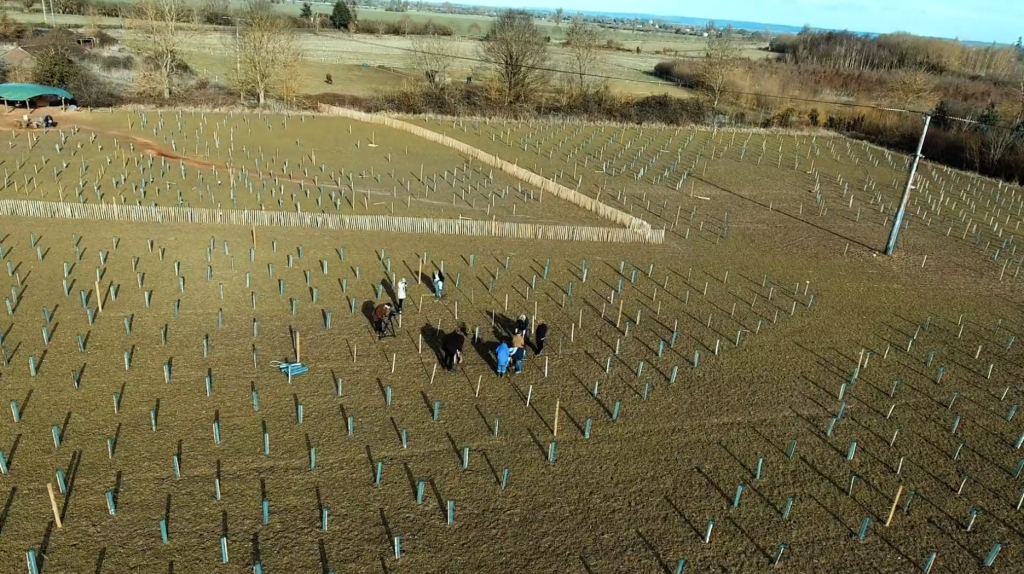
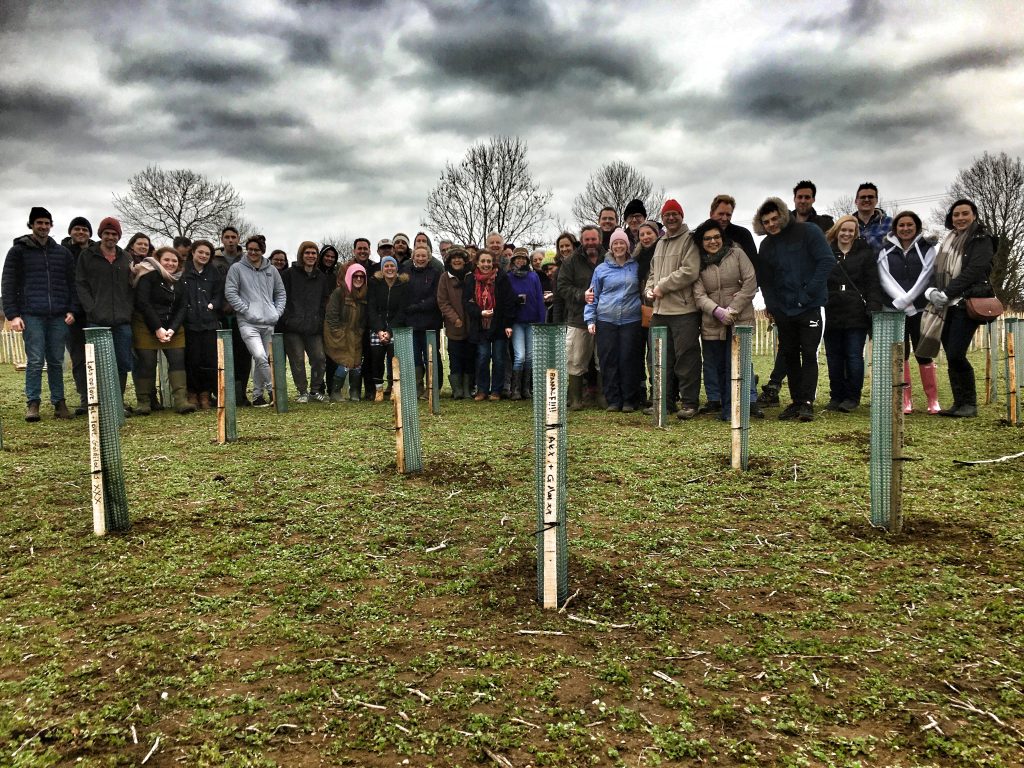
Our ‘Forest Friends’ sponsorship scheme is supporting ongoing management, through volunteer engagement.
At the Sylva Wood Centre we offer a Forest School site for local primary school children who learn and play under the trees as part of their school curriculum. Sylva Foundation is strongly supportive of all children having access to the outdoors for learning, personal development, and health and wellbeing. We previously collaborated with the Forest School Association at a strategic level.
